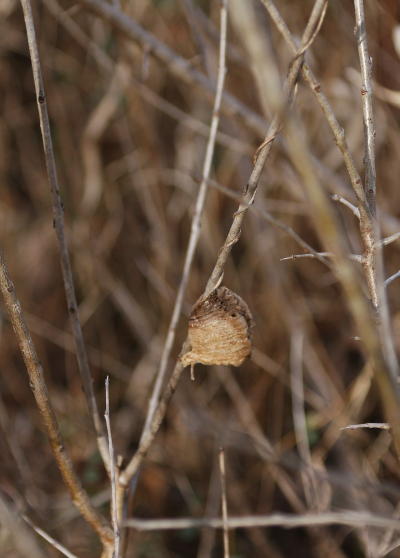 As the previous post indicated, we get our warm spells, which mostly bring rain, but then again, there’s a chance of snow predicted for Thursday night. It will almost certainly be trivial and not worth photographing, but that’s what conditions are like right now.
As the previous post indicated, we get our warm spells, which mostly bring rain, but then again, there’s a chance of snow predicted for Thursday night. It will almost certainly be trivial and not worth photographing, but that’s what conditions are like right now.
Today (as I type this, though it will certainly post the following day,) I had the first serious free time in a week or so and got to a couple of impending projects, among them placing the egg cases (oothecas) of the Chinese mantids that I’d collected. They have come from here-and-there, a few different locations while out looking for photo subjects, the most challenging being in Mason Farm Biological Reserve. Mind you, there were a lot of egg cases to be found, but the vast majority of them had been placed on saplings as seen here, and I wasn’t going to damage a tree for the egg case, so I was watching for those that had been placed on tall weeds instead. They were few and far between, but I found a few (for both Mr Bugg and myself,) so these were added to the others that I’d collected, a total of seven, some of which may not be viable – we’ll see in a couple of months when hatching season arrives. And this is widely variable, depending on the weather, so it requires frequent checks, but with several, the odds of catching them right at emergence are much higher. My goal is to actually catch them springing (well, more like oozing) from the sac itself, preferably on video, something that I have not captured though I did manage some clips soon afterward, shit, three years ago. Two years back, none of my (purchased) oothecas hatched at all, and last year, while I had quite a few to monitor, my timing sucked on all of them and I got no hatching activity. You see? If more of you bought prints and such, or simply became one of them wealthy patrons that I’ve heard of, then I wouldn’t have to work some other job and could devote all my time to the content herein.
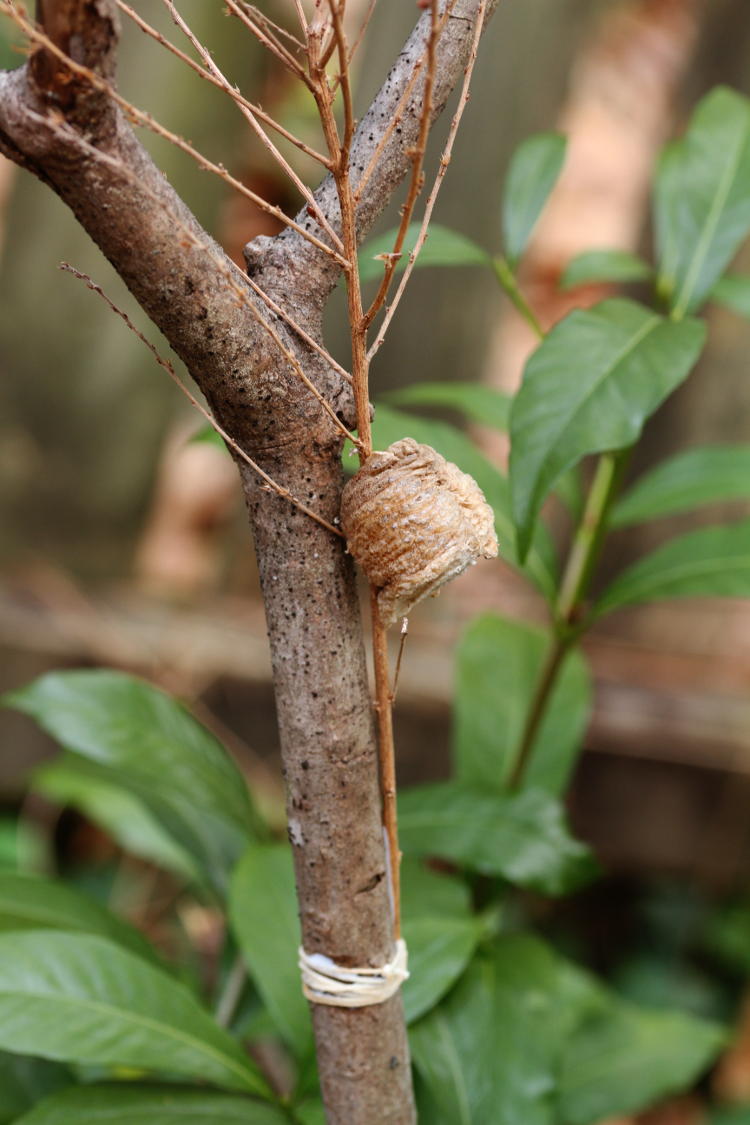
I now have a tally of the locations of all of these, plus two other potential subjects to keep an eye on and begin daily checks when the season approaches: one is a Carolina mantis egg case on the roof edge of the shed, and another is a wheel bug (Arilus cristatus) egg cluster that I spotted on our fence (the far side of course) in the fall. While placing the mantis cases, I checked on them both just for the sake of it, and noticed that the wheel bug eggs were showing activity – only, not the expected kind. In fact, what I was seeing was so small that I brought out the photo rig to achieve the magnification necessary to show what just what it was. More or less.
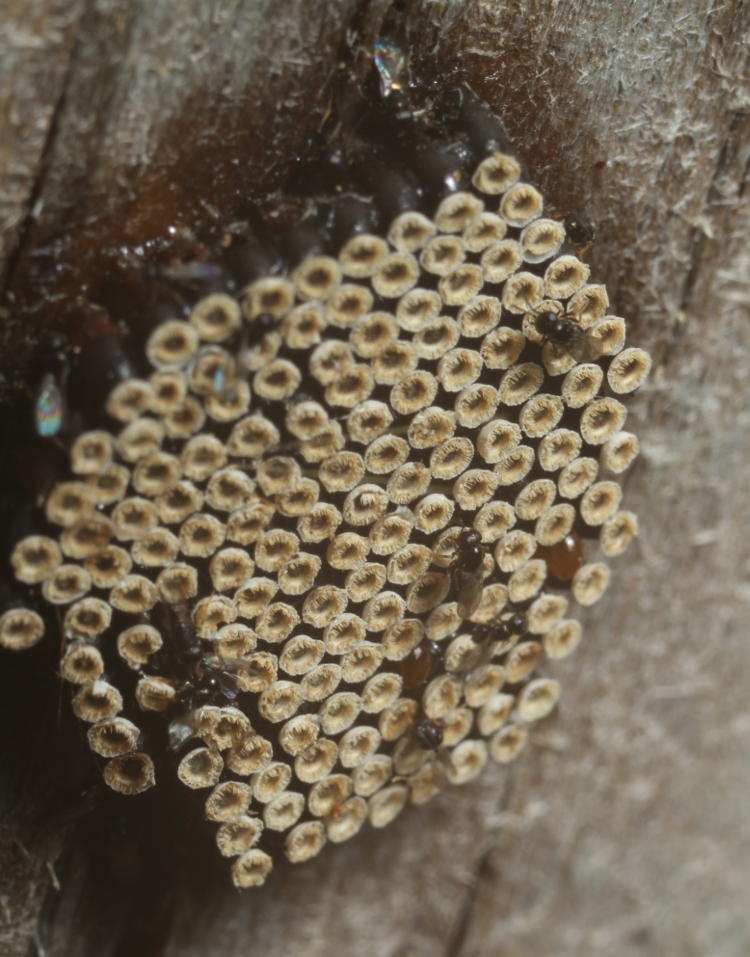
First off, I knew these weren’t the eggs hatching because I’ve seen that before, the brightly-colored nymphs emerging from their clown-car eggs, far too large to have fit inside to begin with – I used to have one of these images in the gallery but since removed it because I need better, so I’m anxiously watching this cluster for that opportunity. Now, what exactly these little flies are, I cannot say because I have too few identifying characteristics to work with, but the size of the eyes puts me in mind of syrphid flies. Bear in mind, the entire cluster can be hidden under a dime, so they’re, shall we say, on the petite side.
Here’s a slightly better look, but still not sufficient for ID.
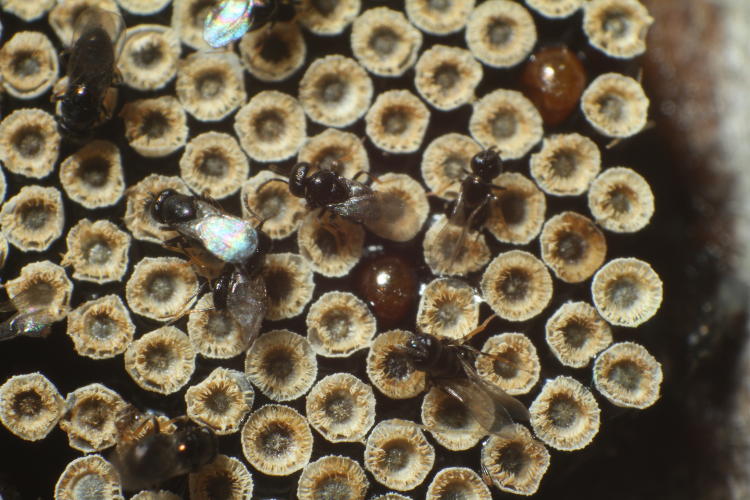
The two fly specimens furthest to the right seem to have their abdomens dipped down into the small gaps between the wheel bug eggs, so it’s possible they’re laying eggs for their parasitic larvae to glom onto the wheel nymphs as they emerge – if they don’t actually burrow into the eggs themselves. And just there I had to pause and determine that this cluster was not, in fact, a cocoon/chrysalis (intermediate stage between larva and adult) instead of eggs, but no, it appears I was right in the first place – wheel bugs do not seem to have a wormlike larval stage.
(By the way, my first photos came about because The Jim Kramer had a patch in his yard many years back, and called me when he found them hatching, but he got much better pics than I did. That time around.)
Being the ultimately-prepared (ahem) nature photographer that I am, I was carrying a paper scale in my wallet, and drew it out to get the measured shot. I have a stack of these, by the way, because I print them alongside my business cards so I can carry a few, they don’t cost me anything, and I’m not worried about damaging or losing them.
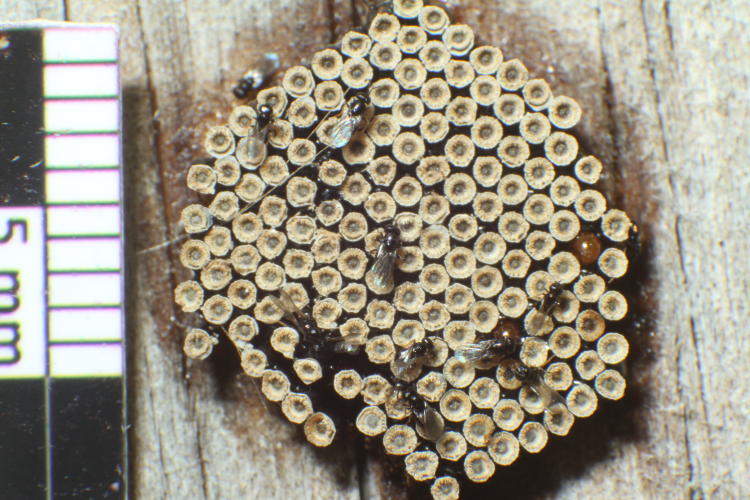
Wheel bugs, by the way, can get big – the disparity in size between hatching and adult is comparable to the Chinese mantids, an increase in mass perhaps a hundred times or better, which leaves me curious as to who might hatch first and begin to prey on the other. Perhaps we’ll have photos or video of a showdown coming up later this year (well, I can hope, anyway.)
While out in the yard with the macro rig in hand, I started watching for other subjects, and soon located one at least.
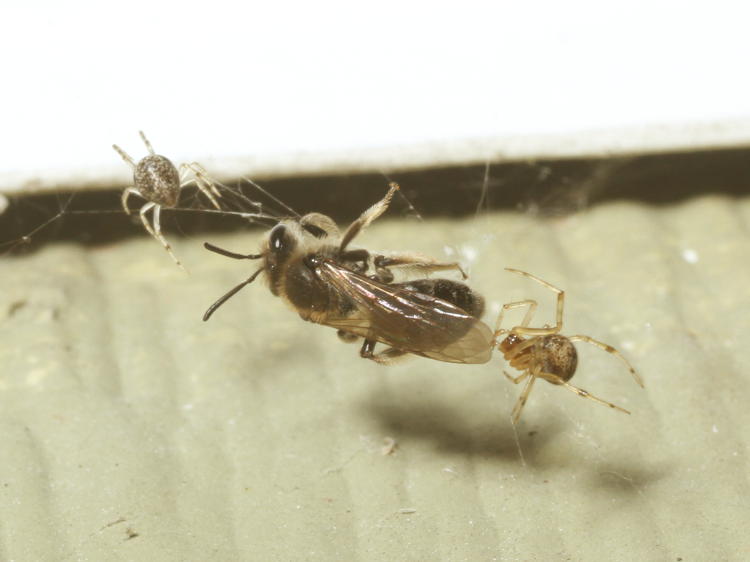
it doesn’t matter how early the bees or flies might emerge, they’re probably behind the spiders, which seem to have a very functional antifreeze system. This little hymenopteran, what we always called ‘sweat bees,’ is truly trapped by a pair of unidentified cobweb spiders on the frame of the shed; I’m taking them for a mated pair, and this is perhaps their late Valentine’s Day celebration. Don’t fill up too much there, guys – it doesn’t help with later on, if you get my drift.
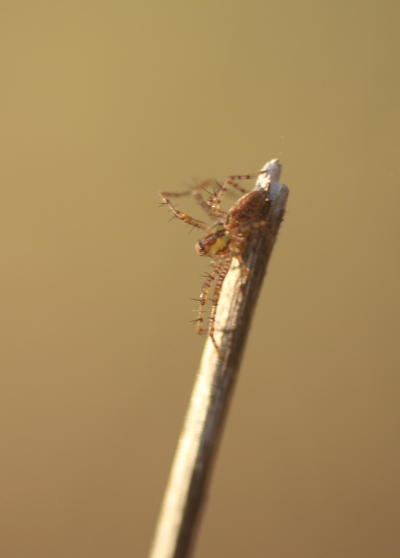 And on yesterday’s (well, Monday’s) outing, Mr Bugg and I sidetracked over to a park that was not flooded, one where we photographed a few green lynx spiders (Peucetia viridans) just shy of producing egg sacs. Knowing that the young would have hatched in the late fall but weren’t likely to have vacated the area yet (if at all,) I searched around for dried weed tops that showed a lot of web strands to indicate that they were likely occupied, but it was Buggato that spotted the first, to his credit. The spider nymphs are ridiculously tiny and very shy, and I was working with natural light and no bracing, so none of my shots came out worth shit, but here’s one just for illustration. As you might imagine, we’re looking at a few millimeters in total length.
And on yesterday’s (well, Monday’s) outing, Mr Bugg and I sidetracked over to a park that was not flooded, one where we photographed a few green lynx spiders (Peucetia viridans) just shy of producing egg sacs. Knowing that the young would have hatched in the late fall but weren’t likely to have vacated the area yet (if at all,) I searched around for dried weed tops that showed a lot of web strands to indicate that they were likely occupied, but it was Buggato that spotted the first, to his credit. The spider nymphs are ridiculously tiny and very shy, and I was working with natural light and no bracing, so none of my shots came out worth shit, but here’s one just for illustration. As you might imagine, we’re looking at a few millimeters in total length.
(I’ve done better of course – how could you doubt me? A good scale shot is here, though I believe the specimen at right is slightly larger, while best detail shots are here.)
And I’ll close with a photo that is wholly unrepresentative of the season and conditions, because it was one of just two trees in the park that were blooming, while the rest all looked as dried and brown as the mantis egg cases up there. But the colors are nice, and I suspect very welcome right now, so appreciate them, you know, before they disappear under water.
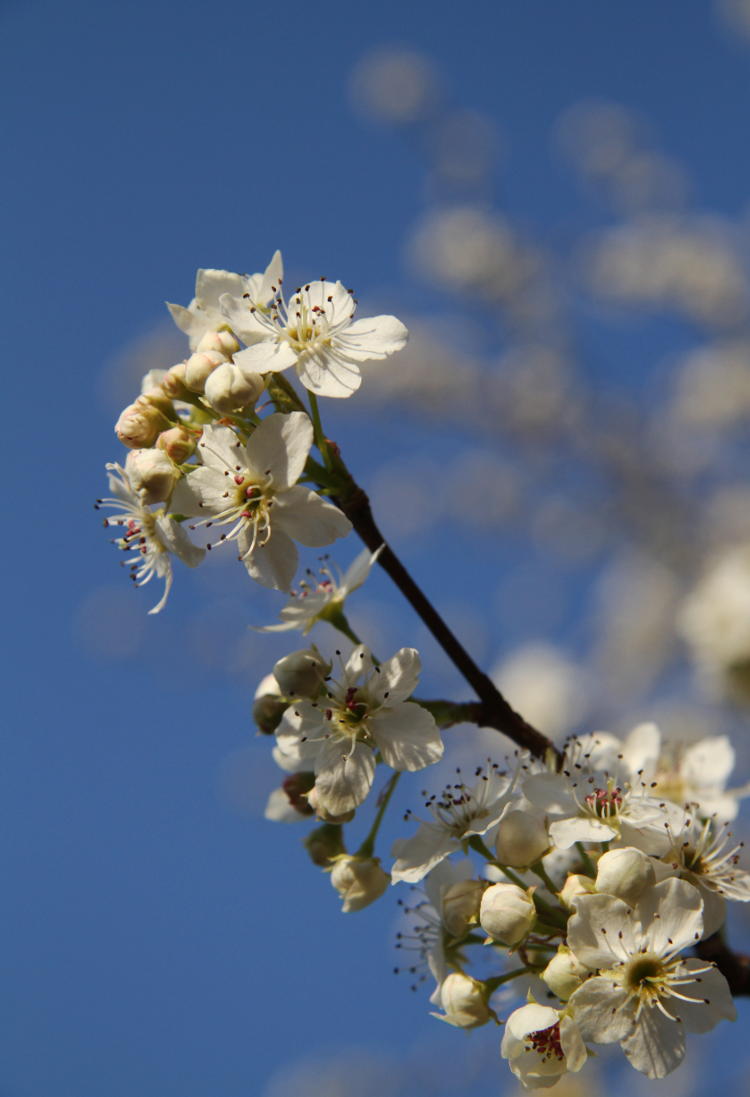





















































I think the flies on the wheel bug eggs may be tiny parasitic wasps.
I’m inclined to agree with you. I did a little poking around and there are three species that seem to prey on wheel bugs, and all of them are minuscule. There were still a few around when I checked, so I collected a couple and attempted to get detail images of them. So far, no luck – we’re at the limits of my ‘normal’ resolution, and the microscope is providing too little depth (and is hard to light – the little buggers appear to be solid black with some gold iridescence.) But I haven’t given up yet.
Thanks for commenting!